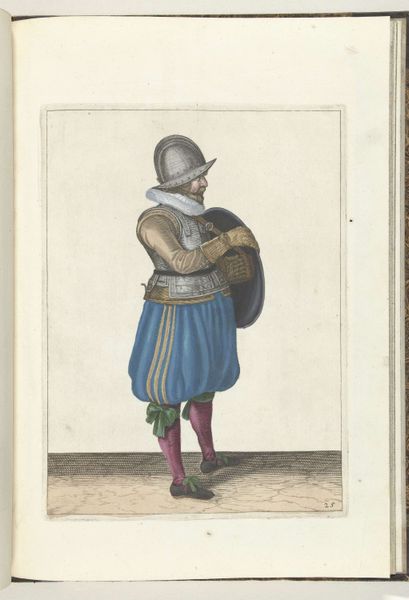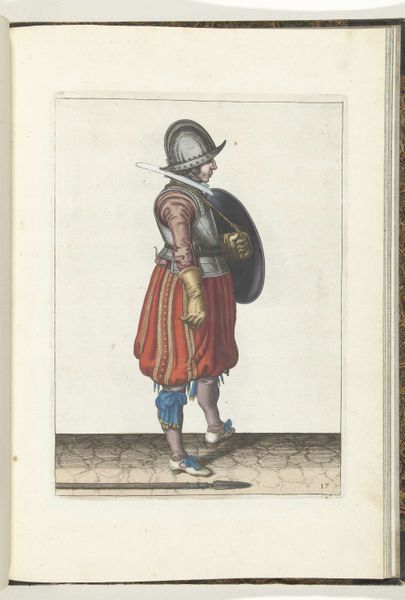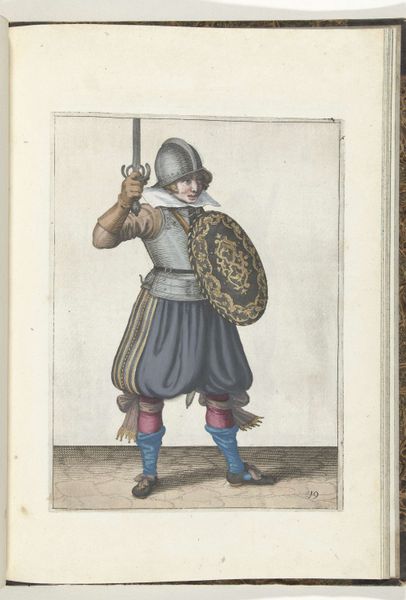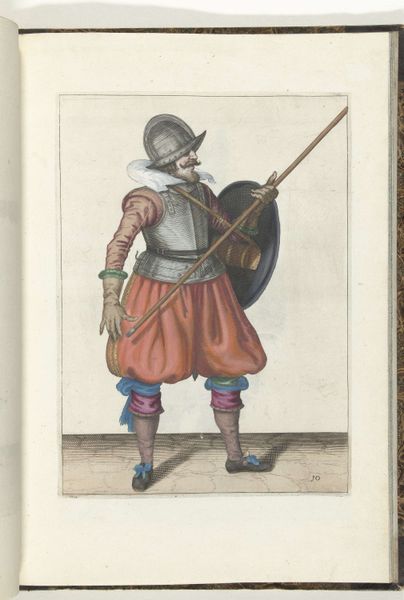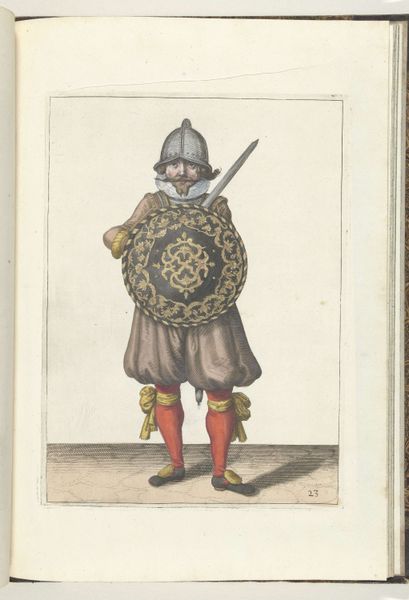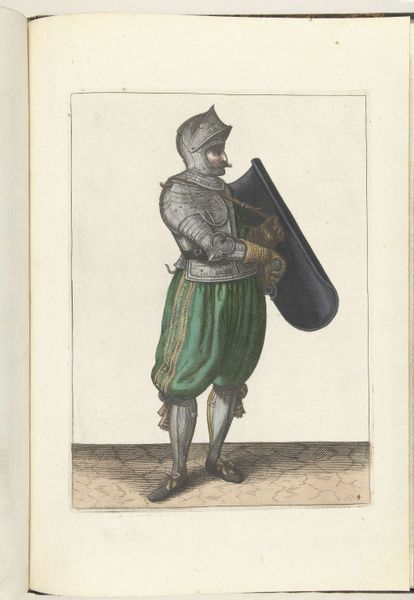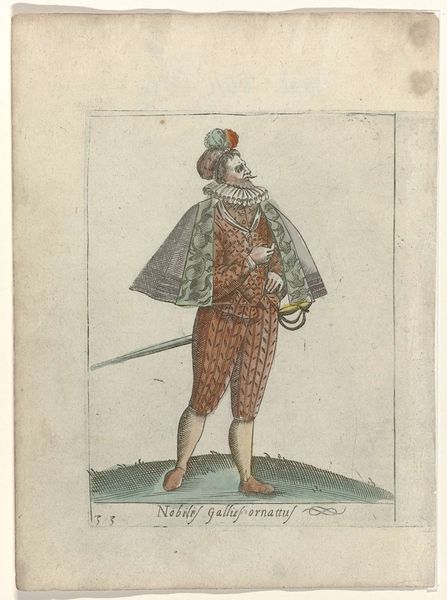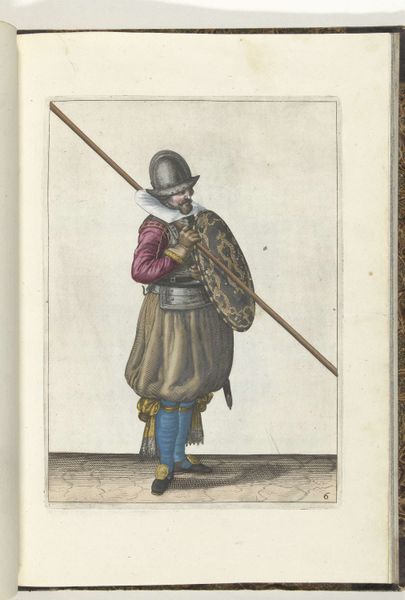
De exercitie met schild en spies: de soldaat trekt zijn rapier van achter zijn schild (nr. 18), 1618 1616 - 1618
0:00
0:00
drawing, watercolor
#
drawing
#
11_renaissance
#
watercolor
#
coloured pencil
#
genre-painting
Dimensions: height 260 mm, width 190 mm
Copyright: Rijks Museum: Open Domain
Editor: Here we have "The Exercise with Shield and Rapier," number 18 in the series, created by Adam van Breen around 1616-1618. It's a watercolor drawing that features a soldier. There's something almost cartoonish about the figure, with its bright colours and somewhat awkward stance. What’s your interpretation of the artwork? Curator: It's interesting that you perceive a cartoonish quality; perhaps the stylized representation speaks to that. I think we need to consider the context: this wasn’t simply an aesthetic exercise, but likely a documentation of military training. What does this depiction of a soldier preparing to draw his rapier suggest about the intersection of identity and conflict in the early 17th century? Editor: I hadn't thought about the manual aspect. The artist isn't trying to ennoble or glorify war; it seems much more pragmatic. Does this connect to larger social themes of the time? Curator: Absolutely. Think about the Dutch Republic during this period, engaged in the Eighty Years' War. Van Breen’s series highlights the shifting military strategies and technologies of the era, but also a societal move to defend their interests. This links strongly to discussions on cultural identity, nationhood, and perhaps a budding sense of national pride against Spanish rule. How does the piece contribute to visual culture surrounding emerging concepts of masculine identity related to military prowess? Editor: That shifts my perspective. It isn't just a historical document or military guide; it provides insight into this period of state-building. Curator: Precisely. And looking closer we also realize this image has an artful touch in the selection of hues, as the message also served an aesthetic purpose. Editor: Thanks, it makes it much easier to consider it within a broader historical and cultural scope. Curator: My pleasure. I will ponder upon it longer.
Comments
No comments
Be the first to comment and join the conversation on the ultimate creative platform.
